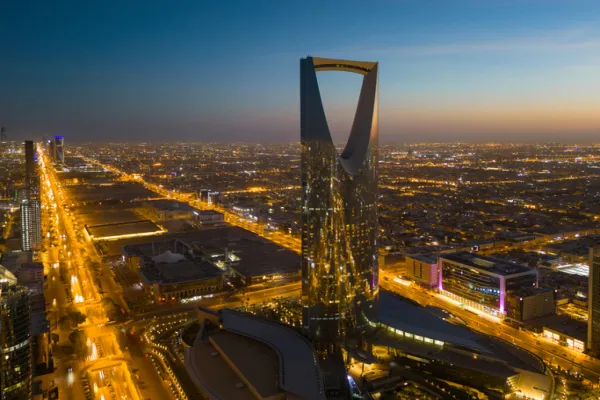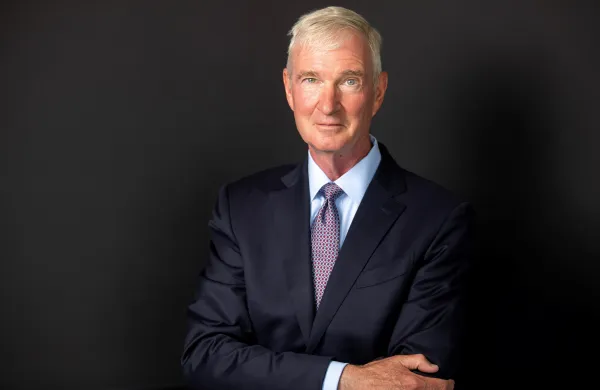IN EARLY APRIL, DUBAI'S MUNICIPAL GOVERNMENT reported that the number of abandoned cars — the symbol par excellence of the once-high-flying emirate’s economic bust — rose by 10 percent in the first three months of this year from the same period a year earlier. But rather than seeing that indicator as a sign that the economy was taking a turn for the worse, leaders attributed the pickup to simple efficiency: The authorities now have three tow trucks to bring in vehicles, compared with just one last year. The car repo business, with numbers that can be good or bad, depending on how you look at them, is a good metaphor for Dubai’s economic and financial condition. The emirate, which splashed on the global scene a decade ago with a flashy, money-is-no-object development philosophy, only to be brought down by the near-default of some of its flagship companies three years ago, has been quietly getting a handle on its debt problems. Since late 2009, Dubai and its government-related entities have restructured more than $20 billion of bank debt, nearly two thirds of the total, by arm-twisting creditors with a decree that resembles a Western-style bankruptcy restructuring. The emirate’s economy is also on the mend, with moderate growth buoyed by a rebound in tourism and trade.
Dubai may have bounced off the bottom, but it still has a long way to go to resolve its debt problems and return its economy to robust health. Government-related entities such as Dubai World, the conglomerate that set off the crisis in late 2009 by declaring a debt standstill, have rescheduled a large portion of their obligations, but they remain saddled with a massive burden. In its latest report on the United Arab Emirates, issued last month, the International Monetary Fund estimated that the overall debt of Dubai’s GREs — including bank debt, bonds and sukuk (Islamic bonds) — stands at $84.3 billion, or 60.4 percent of GDP. That debt mountain has declined by about $5 billion over the past two years, but the GREs still need to roll over an estimated $14 billion of debt this year.

“The only way for Dubai to fix its problems is to grow the economy and generate income, and trade its way out,” says Neil Cuthbert, a senior partner at the Dubai office of law firm SNR Denton. “Over time it will happen. The interesting question is, how long will the banks be happy to carry on pushing out maturities?”
So far, the banks have had little choice but to do so, and the authorities have taken full advantage of that fact. Exotix, a London-based investment bank specializing in frontier markets, has dubbed the authorities’ strategy “the four B’s” — “bail out bondholders, burn the banks” — and that formula has been remarkably successful, says Ahmad Alanani, the firm’s Dubai-based director of fixed-income sales. “Aside from the speed at which they’ve managed to restructure, what surprised me the most were the terms that they’re getting away with,” he says. “They have pushed the banks to the limits, both local and international.”
In April, for example, Dubai International Capital, a private equity firm owned by the emirate’s ruler, Sheikh Mohammed bin-Rashid al-Maktoum, persuaded its lenders — including HSBC Holdings, Lloyds Banking Group and Royal Bank of Scotland Group — to stretch out the maturity of $2.15 billion in loans by five years at an interest rate of just 2 percent. The banks also agreed to extend the maturity of an additional $350 million in loans by three years.
Dubai Group, the sheikh’s main financial services holding company, is currently holding talks with lenders in a bid to restructure as much as $10 billion in bank debt. Exotix estimates that Dubai so far has completed six bank debt restructurings, covering $21.9 billion of the GREs’ total bank debt of $34 billion. That is much more than Alanani thought would be possible not long ago. “I was definitely bearish in 2010,” he says. “The restructuring is going so much better than what I was expecting.”
What explains the success? Bankers say Dubai has aggressively pursued its debt restructuring strategy from a position of surprising strength. International banks want to preserve their existing commercial ties in the emirate and to continue to do business there, a fact that the emirate is not shy in pointing out during negotiations. “As for local banks, the Dubai government is sitting on both sides of the negotiating table,” Alanani says. “They have a controlling interest in the banks, or there are political relationships that come into play.”
Dubai-based Emirates NBD Bank, which is 56 percent government-owned, has been a party in all six of the completed restructurings and is involved in debt talks with five other entities.
Khalid Howladar, senior credit officer at Moody’s Investors Service in Dubai, says the strategy works because it forces the creditors to look beyond their own positions and focus on protecting the emirate’s entire financial ecosystem. “The banks take the initial hit and take on the refinancing burden,” he says. “But if creditors were to foreclose, that would trigger a default, creating a systemic stress that affects the entire system — the banks, the corporates and the government.”
Even as the global credit crunch began to deflate the Dubai economy in late 2009, Eric Swats, head of asset management at Rasmala Investment Bank in Dubai, saw opportunity. At the time, debts of sovereign-backed entities were trading for as little as 15 cents on the dollar, which the securities firm considered to be an overreaction. “We felt quite confident that the baby was being thrown out with the bathwater,” Swats says.
So Rasmala set up a fixed-income fund in March 2009 to invest solely in the debt of companies in the UAE, including those in Dubai. “The bondholders would be paid in full because the local population owns some of those bonds,” Swats says. “The rulers would not default on their own.”
Rasmala invested a few million dollars of its own capital in the now-$40 million fund, which it expanded in 2010 to cover the entire Gulf Cooperation Council, a group that encompasses Bahrain, Kuwait, Oman, Qatar and Saudi Arabia as well as the UAE.
The markets are responding to Dubai’s strategy. Honoring bondholder obligations has helped restore the emirate’s creditworthiness, allowing the government and its entities to tap the markets.
In April, Dubai’s Department of Finance issued a $1.25 billion sukuk through its trust certificate issuance program, which was established in October 2009. The deal included a five-year, $600 million tranche priced to yield 4.9 percent, or 403.1 basis points over comparable U.S. Treasuries, and a ten-year, $625 million tranche priced to yield 6.45 percent, or 445.7 basis points over Treasuries. By comparison, the department had to pay 6.39 percent to sell a five-year sukuk in 2009. Citigroup, Dubai Islamic Bank, HSBC and the National Bank of Abu Dhabi were book runners on the deal.
With $4.5 billion in orders, Dubai’s sukuk was three times oversubscribed. “Investors were happy with the steps taken by the government over the last three years to counter the impact of financial crisis and prudent measures to control costs and manage its budget deficit,” said Abdulrahman al-Saleh, director general of the Dubai Department of Finance, in a statement.
The sukuk was also supported by a healthy appetite for Islamic investments, says Adnan Halawi, head of fixed income at Zawya, a Dubai-based financial news and data provider. Just a few days before the Department of Finance’s sukuk, an issue of $1.75 billion by Saudi Electricity Co. had attracted demand of more than $15 billion.
Like Saudi Electricity, Dubai wanted to tap into that investor base: institutions and family offices in the Arab world that want to invest only in instruments that adhere to shari’a law, which prohibits the levying of interest or investing in entities involved in forbidden activities such as gambling or alcohol.
Halawi says the sukuk’s success illustrates the progress that Dubai has made. In late 2009 the emirate appeared to be on the verge of defaulting after state-owned Dubai World shocked global markets by declaring that it would seek a standstill on the $25 billion in debt it had racked up during the boom years. Today, Dubai is accessing the capital markets at historically low rates, says Exotix’s Alanani. “The bond market has forgiven Dubai completely,” he adds. “It really shows how the markets are so myopic.”
Other market indicators also suggest growing confidence in Dubai. Credit default swaps on the emirate’s debt were trading at 385 basis points late last month, well below the peak of 974 basis points in February 2009 but well above precrisis levels of 154 basis points in August 2008, according to financial information provider Markit. CDS rates on Dubai Holding’s debt stood at 939 basis points last month, down from a peak of 2,176 in December 2009.
Even in situations where creditors have balked at Dubai’s restructuring plans, the emirate has largely succeeded in getting its way. In February, New York–based Monarch Alternative Capital, which invests largely in distressed debt, won a $45.5 million claim in the U.K.’s High Court against Drydocks World, a shipbuilding and repair business with operations in Dubai, Indonesia and Singapore. The hedge fund firm is among a minority group of creditors fighting a proposed $2.2 billion restructuring plan that includes a five-year moratorium on debt repayments.
A few weeks after the High Court ruling, however, Drydocks filed a claim with a special tribunal at the Dubai International Financial Center, which operates and regulates Dubai’s financial marketplace. The claim was filed under Decree 57, which Sheikh Mohammed laid down in 2009 to govern the debt restructuring at Dubai World and its subsidiaries. The decree states that if at least two thirds of creditors agree to a restructuring proposal, the tribunal has the power to make it binding on others involved in the claim. Drydocks’ filing, which effectively negated the U.K. ruling, was the first time a Dubai entity had used the decree.
Unlike bank creditors, Monarch wasn’t really interested in preserving the financial ecosystem in Dubai, says Moody’s Howladar. “They’re not worried about the long-term economic viability in Dubai,” he notes. “They’re trying to maximize their gain, which is completely rational.”
Drydocks’ restructuring plan seemed to be on its way to completion, but talks stalled again after an early-May ruling by the Singapore Court of Appeal that put into doubt the ability of a portion of the creditor group to gain control of a drilling rig in exchange for dropping its claims. Now Drydocks’ management says it expects to finalize its plans by August.
Drydocks is not the only high-profile debt restructuring on the horizon. This month a $1.25 billion sukuk issued by DIFC Investments matures. DIFC Investments owns and operates office buildings in the Dubai International Financial Center, a complex where many investment and commercial banks have their Middle East headquarters. The firm reportedly plans to pay off the debt by raising at least $900 million through a five-year syndicated loan and using its own cash for the remainder.
“Dubai leaders have been adamant that the DIFC [sukuk] would be repaid,” says Karim Nassif, a credit analyst at Standard & Poor’s in Dubai. “What’s not clear is how the debt would be settled.” Some observers speculate that the Department of Finance could use some of the proceeds from its recent sukuk issue to cover DIFC’s obligation. In the meantime, S&P placed DIFC on credit watch in April, indicating a 50-50 chance that the agency would lower its B+ rating within 90 days.
DIFC Investments sold the floating-rate sukuk in 2007, and like other Dubai entities it hopes to sell assets to raise the $1 billion it needs to pay off its debt. Among the assets said to be on the block is SmartStream, a software company that provides data to banks, bought by DIFC Investments in 2007.
Jebel Ali Free Zone, an entity known as Jafza that provides offices, warehouses and land to companies in Dubai, is facing a November due date for a $2 billion sukuk it issued in 2007. In a filing with Nasdaq Dubai in early May, the free zone said it wanted to introduce a call option to repay its debt six months ahead of schedule; this would give Jafza flexibility to redeem the sukuk with fresh bank financing.
The biggest single financing hurdle on the horizon is two years off, when the $20 billion Dubai Financial Support Fund comes due. That bailout fund was extended in equal portions by the UAE central bank and the government of Abu Dhabi, the wealthiest of the seven emirates in the federation, along with a consortium of Abu Dhabi–based commercial banks.
In the meantime, the recent sukuk issues and debt restructurings are buying time for Dubai to get its house in order, says Moody’s Howladar. “They’re hoping that in the interim the operating environment and global markets will improve,” making asset sales and other types of income-generating measures viable, he says. Dubai Holding and DIFC Investments had about $870 million and $457 million, respectively, in assets classified as “held for sale,” Moody’s reports, citing year-end 2010 financial statements.
An improvement in the local economy, if sustained, should help Dubai get back on track. The IMF predicts that the economy will grow by 3.7 percent this year, driven by stronger trade and a revival of tourism. “Dubai has bounced back and managed to shift the focus and attention onto those segments of the economy that are doing phenomenally well: the three pillars of logistics, trade and tourism,” says Exotix’s Alanani.
Regional political trends have given Dubai a boost. In the year since the Arab Spring movement began, Gulf governments have granted their citizens lavish boosts in already generous welfare packages, including pay raises of 50 percent or more, in a bid to forestall domestic instability. “If you’re from Saudi or Qatar, the nearest holiday is Dubai,” says Moody’s Howladar. And unrest in Bahrain and North Africa has sent businesses and high-net-worth refugees fleeing to Dubai.
Sibling emirate Abu Dhabi will likely bridge any liquidity gap Dubai might face. Abu Dhabi recently has had to pump up its own cash-strapped GREs following a construction spree. But with a sovereign wealth fund fattened by the revenue from $120-a-barrel oil, it’s not likely that Abu Dhabi would let Dubai founder, analysts say.
But there are major risks ahead, led by the weakness in the euro zone and the danger of Greek default. Instability in Europe would make it much harder for Dubai to roll over its maturing debt, the IMF warned in its recent report. Yet continued strength in Asian economies is helping to boost Dubai Inc.’s bottom line. “It’s a cliché, but its position as a hub helps drive that business,” says Moody’s Howladar. “In four or five hours’ flying time, you have a couple of billion people in both directions.”
Seaport operator DP World recently pointed to strong business in Asia as the main factor boosting cargo volumes at its ports by 9.5 percent in the first quarter of this year. The bulk of the gains came from DP World’s businesses in the Indian subcontinent and in Far East markets, which together saw a 14.6 percent jump in trade.
Dubai International Airport has also reported double-digit growth. Passenger traffic in March reached 4.85 million, an increase of 15.4 percent over the same month in 2011. March was the third straight month that the airport exceeded the 4.5 million mark. Traffic for the first quarter was up 16.1 percent.
Dubai is leveraging the prosperous airport, and other solid parts of its economy, to raise capital. Officials said recently they were looking at financing an expansion of the airport by securitizing revenue from Dubai Duty Free, the airport’s giant mall.
Do all these efforts mean Dubai has adopted a more sober development philosophy that favors sustainability over glitz? Well, perhaps not.
In early May, Drydocks World announced a partnership with a Swiss company to build a series of underwater hotels, the first of which would be located off the shores of Dubai and Abu Dhabi.
Plans for the Water Discus Hotel show a futuristic collection of disk-shaped buildings — some submerged beneath the sea and some standing above it on stilts — that would house a deluxe hotel. Rooms would be outfitted with special lighting to enhance views of the sea and marine life.
“Our expertise lies in developing future strategies aimed at advancing the construction of technology-driven pioneering projects in the maritime sector,” Khamis Juma Buamim, Drydocks’ chairman, said in a statement.
Considering that Dubai got into trouble by developing grandiose projects like luxury housing on man-made islands in the shape of a giant palm tree, the announcement of the underwater hotels raised no small number of eyebrows among financial and legal experts, who believe Dubai needs to maintain a sober approach if it wants to claw its way back to financial health. As SNR Denton’s Cuthbert puts it, “Drydocks needs to focus on its core business, which is not hotels, let alone subsea ones.” • •






